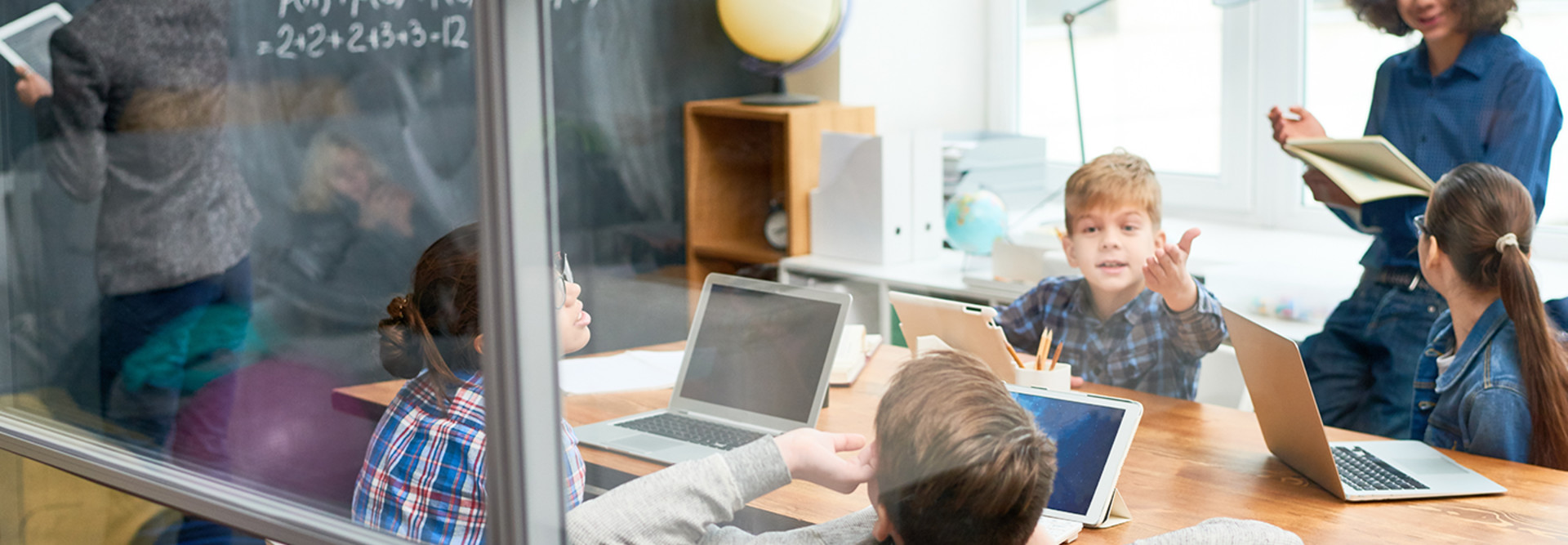Ten years ago, if you walked into a K–12 classroom, the focus — at least at first glance — was on the teacher. To collaborate, students rearranged their desks into a circle. Today, however, that’s shifting. As we move toward a student-focused classroom, collaboration requires more than rearranging the desks.
It demands a technology infrastructure overhaul. And now is the perfect time to address this sea change, because many schools are making physical renovations from top to bottom, including their buildings, infrastructure, learning tools and furniture.
Consider this: The American Society of Civil Engineers gave U.S. public schools a collective grade of D+, saying 53 percent of schools need improvements to reach “good” condition; 24 percent were rated either “fair” or “poor.” If now is the time schools have chosen to make significant investments in physical infrastructure, then now is also the time to thoughtfully consider forward-thinking, modern learning technology upgrades that can be implemented as part of those larger projects.
MORE FROM EDTECH: Check out how K–12 schools are preparing for modern learning environments.
K–12 Schools Need to Commit to Digital Transformation
Of course, it’s the rare school district that has a bottomless supply of financial resources to renew and rebuild. For the vast majority, meticulous planning and budgeting set the stage for improvements over the long term. And as part of this process, it makes sense to include technology improvements and upgrades.
For example, in the midst of a larger set of investments, Owensboro (Ky.) Public Schools added a District of Innovation Tech Network Center, built with technology that will help its students move seamlessly from the classroom directly into the workforce.
This work was part of a larger district program that includes finishing an $8.5 million project on Newton Parrish Elementary School. That project features a new athletic and performing arts center, a gymnasium and three new classrooms. OPS updated every existing classroom too, putting in new lighting, windows, and geothermal heating and air.
Technology improvements such as a new network and access points, new filtering services, changes to LAN/WAN layout and footprint, and the evaluation of Voice over IP were also on the agenda. The district was smart: Facilities coordinated with IT to implement technology changes, something that makes sense for every district because it’s easier to make technological changes when physical changes are also on the drawing board.
After all, it’s all of these types of investments that improve a student’s working environment, access to information and collaborative learning, which will help to shape their future, according to experts at EDUCAUSE.
The organization asks that all students have access to “learning-ready spaces” that meet specific criteria. Notably, those spaces should focus on student comfort and provide “multiple ways for instructors and students to engage with the content and express themselves.” That entails not only the spaces they sit in, but also the technology they use in their environments.
Schools of the future should take their cues for this edict from the businesses of today. From a technology perspective, students, like employees, simply need to get their work done. This means educators should look at integrating many of the same technologies that provide modern workers with opportunities for collaboration, growth and innovation, which range from videoconferencing and collaboration tools to analytics.
Having a fast, secure network and up-to-date operating systems are critical to success. Classroom technology, fortified by a robust network, gives students the ability to video chat with other students across the globe or research their latest project.
Teachers can upload assignments and create student portals so parents and caregivers can be more involved with their child’s progress and work, and everyone gains access to cloud-based services, tools and textbooks. Digital cameras let students record experiments, create video blogs and capture their work so it’s easily shared and stored. Finally, devices such as tablets, makerspace equipment and laptops put online access squarely into their hands.
Harbor Beach (Mich.) Community Schools recently renovated its library into a modern learning environment with strong Wi-Fi, comfortable and flexible furniture, HDTVs and a cart of notebook computers. The project is now showing a return on the district’s investment, says Superintendent Shawn Bishop, who added that the technology now draws students into the library, which is bustling every day.
“It’s the hub of the high school — as it should be,” Bishop says.
Physical and technological upgrades together are a lot to consider, and may be overwhelming to some. But there is a way to improve even if your budget is limited, as most school budgets are. While it may not be possible to bring all of these improvements to bear immediately, by starting small and focusing on a mix of aesthetic and technological fixes, we can and will improve the student experience one step at a time.












